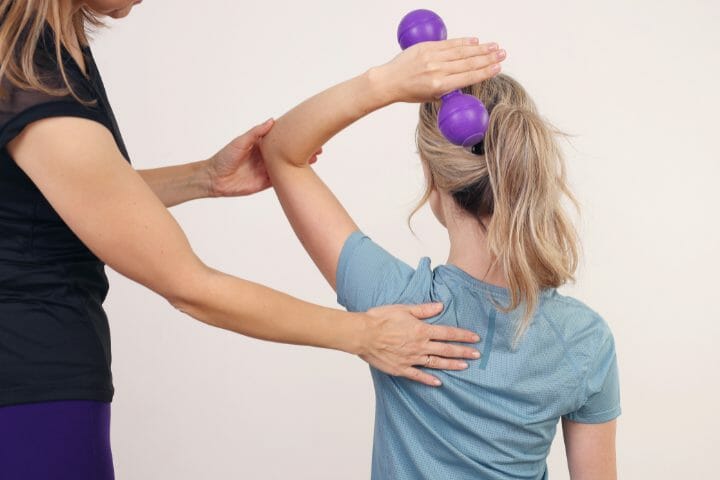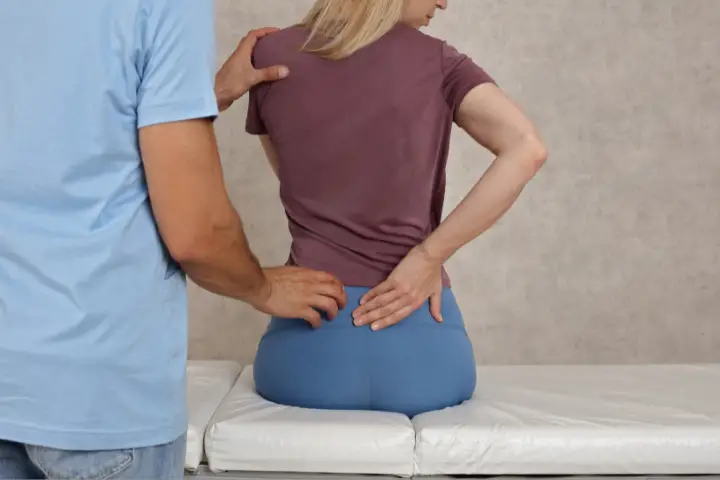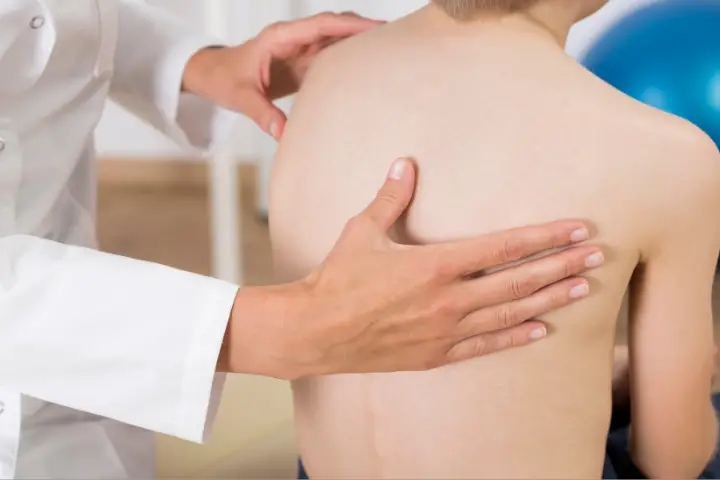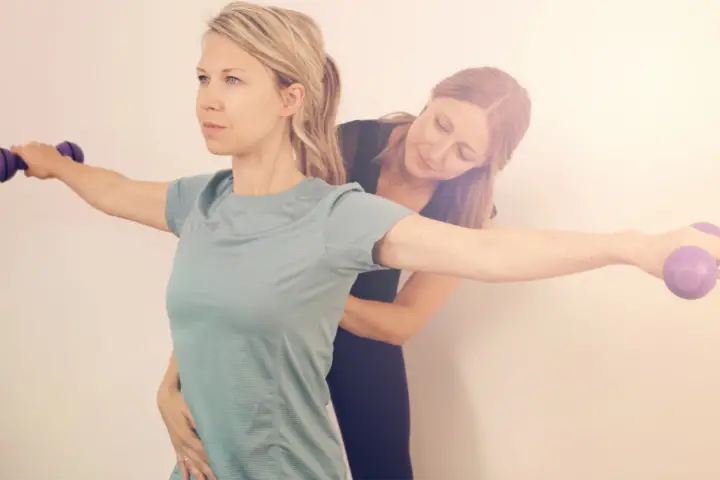It’s not easy being a teen’s parent, you have to take care of so many things. For example, you might wonder, can you get scoliosis from bad posture? Do heavy backpacks cause scoliosis? And other similar questions. Well let’s answer them all here!
Contents
Scoliosis is an abnormal curvature of the spine, most common in late childhood and early teens when children grow fast. This condition is usually not caused by sports participation, sleeping positions, or leg length disparities.

The cause of scoliosis often can’t be determined. Some common causes identified by doctors are spinal injuries, congenital disabilities, cerebral palsy, or neuromuscular conditions.
Poor posture, heavy backpacks, connective tissue disorders, and spinal injuries can also cause spinal curvature in rare cases.
Causes Of Scoliosis
- Idiopathic scoliosis is the most prevalent type of scoliosis, which implies the reason is unknown. The term “idiopathic” is used to describe scoliosis that has no recognized cause. As much as 80% of the time, doctors cannot pinpoint the exact cause of a bent spine.
- Genetic evidence for scoliosis has recently been discovered, according to new studies. That suggests that the reason for the spine curve is because it is genetically inclined to do so.
- In some cases, the condition may be present by birth, known as congenital scoliosis. Before birth, a baby’s back begins to develop congenital scoliosis. The curvature of the spine can be caused by problems with the vertebrae, the tiny bones in the back. It is possible that the vertebrae are missing or do not split correctly. When a baby is born, doctors may be able to detect this extremely unusual abnormality. They may not discover it till they are in their teen years.
- Scoliosis also results from a neurological condition, such as spina bifida, cerebral palsy, or spinal cord injury.
- If by chance, one leg of a person is longer than the other, he/she may develop scoliosis after a few years of birth.
- In rare instances, poor posture, heavy backpacks, connective tissue disorders, and spinal injuries can result in scoliosis.
Can You Get Scoliosis From Bad Posture?
Yes, scoliosis can be caused due to poor posture and is known as postural scoliosis. If, for example, your work or some physical activity that you do requires you to stay in a curved position for long hours throughout the day, you might get scoliosis. Due to uneven tension in the back muscles, your spine may become slightly curved.
Scoliosis due to poor posture can be reversed if the affected person starts maintaining a proper posture or acts as advised by the doctor.

How is Postural Scoliosis Identified?
Postural scoliosis can be easily spotted. The body might be tipped to the left or right due to a spinal bend. Scoliosis can make you appear to be sloping to one side. If one of your shoulders is higher or your shoulder blades protrude more out from your body, it’s a symptom of scoliosis.
When you bend over, one side of your ribcage may protrude more than the other. This is because your spine is twisted. If your clothes do not hang properly or one hip is more prominent than the other, it can be due to scoliosis.
How Bad Posture Affects Spine?
Muscles and ligaments sustain the human skeleton. When the skeleton’s alignment shifts, so does the spine’s center of gravity. This changes the amount of effort the muscles have to put in to keep their balance.
“Poor postures” relate to positions in which the body’s structures are required to work more to sustain. Good postures, by contrast, are those that need the least amount of muscle effort.
Ideally, your posture is considered upright when the hips, shoulders, and ears are all in a single line when you view yourself from the side in a mirror.

The muscles would have to work harder if they deviated from this position. Slouching or leaning to one side when sitting would put extra strain on one’s strengths. These muscles may become overworked and tense as a result of this.
The spine may be somewhat curved if one maintains a bad posture for a lengthy period, resulting in muscular imbalance. It is not the same type of scoliosis that is caused by bone defects to have postural scoliosis.
This type of scoliosis disappears on the X-ray film if the patient is lying down for the X-ray. As a result, postural scoliosis may happen due to incorrect posture, but there will not be any bone deformity because of this reason. By working out and correcting your posture, you can entirely reverse it.
What Degree of Scoliosis Requires Surgery?
More than a 50-degree curvature justifies surgery. Otherwise, the condition will affect the person’s daily activities or quality of life significantly. Scoliosis surgery is rarely necessary in most cases. Surgery should be considered if the curve continues to deteriorate despite braces or exercises and reaches or exceeds 50 degrees.
Scoliosis surgery comes with several risks, including a rigid spine, weak muscles in the spine, and the rods breaking. After scoliosis surgery, the spine will never grow back. If surgery is necessary for a growing youngster, try to put it off as long as feasible. This is to ensure that the spine’s development is not impeded.
Can Scoliosis Be Corrected Without Surgery?
Besides surgery, applying braces and physiotherapy are the most fruitful methods of treatment for scoliosis. The goal of wearing a brace is to slow down, not stop, the advancement of a curve. In most cases, bracing is utilized when the scoliosis curve is between 25 and 40 degrees and the spine has not yet completed its full maturation.
Girls are typically 13 to 15 years old at this point, while boys are 15 to 17 years old. Braces should be worn if the curve is less than 25 degrees but worsens by more than 5 degrees in six months. Throughout the adolescent years, the brace must be worn 18-20 hours a day.

Improved flexibility and muscle strength are two of the goals of physiotherapy.
It prevents muscle imbalance & joint inflammation from developing, and it helps alleviate back discomfort. It helps those with scoliosis, whether or not they wear braces. Physiotherapy is often suggested for people with more severe curvature. As a result, physiotherapy improves the outcomes of braces while and after they are removed.
Wrapping Up!
Bad posture can be one of the reasons for scoliosis, but it can be reversed. If you take proper medications, improve your body posture, or act as advised by the doctor, you can improve your spine’s curvature.

